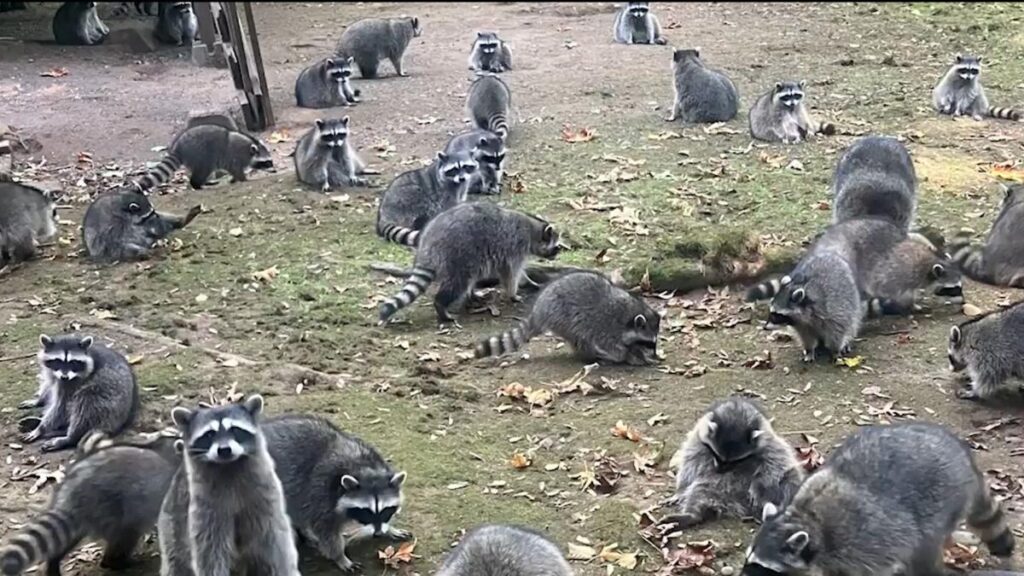In Kitsap County, Washington, a woman experienced an unusual and alarming encounter with nearly 100 raccoons that swarmed her home during broad daylight. This incident unfolded last week, leading the resident to call 911 after feeling threatened by the sheer number of these animals, which prevented her from leaving her property. Footage provided by the Kitsap County Sheriff’s Office revealed a deputy speaking to the unidentified homeowner, who noted that the raccoons had begun gathering in her wooded backyard approximately six weeks prior to the call for assistance. The alarming situation was made more concerning due to the woman’s long-standing habit of feeding the raccoons for nearly 40 years without prior incident, a testament to the unusual escalation of the raccoons’ behavior.
The resident, who lives a few miles north of Suquamish, described to deputies that while she had consistently fed the raccoons over the years, she had never seen them arrive in such large numbers. Moreover, she reported a change in their behavior; the raccoons had become more aggressive and frightening, a stark contrast to their usual demeanor. According to Kitsap County Sheriff’s Office spokesman Kevin McCarty, the homeowner expressed that while she found the regular raccoons to be harmless, the recent influx had raised her concerns significantly. As the situation escalated, it prompted law enforcement intervention, illustrating the complexities that can arise from routinely feeding wild animals.
On the day of the incident, which occurred on October 3, 2024, the woman detailed her interactions with the raccoons to a deputy. She mentioned that they would scratch on her windows and walls at all hours, indicating an unhealthy reliance on human-provided food. The tipping point came when she felt unable to leave her home due to the raccoons’ persistent presence. When deputies arrived shortly after she called for help, they assessed the situation and, at that moment, deemed the raccoons not to be overly aggressive.
Following the initial report, the situation was further escalated when life officials became involved in the case. The Kitsap County dispatchers referred the woman to the Washington state Department of Fish and Wildlife, which directed her to the “wildlife control operators” program—a resource designed to assist residents with wildlife concerns by connecting them with certified trappers. This step was emphasized due to the legal implications surrounding the treatment of wildlife, where trapped animals must either be released on-site or humanely euthanized, highlighting the challenges inherent in managing a raccoon population influenced by human behavior.
Officials from the Department of Fish and Wildlife issued a warning regarding the feeding of wildlife, pointing out that such practices could lead to numerous issues, including the spread of diseases and a significant alteration in the animals’ natural wariness of humans. They noted that a constant food source can draw in additional animals and even predators that could pose risks to people. This advice adds a layer of complexity to the woman’s situation, prompting discussions around the ethical considerations of feeding wild animals, particularly in inhabited areas where their behaviors could impact human safety and community health.
As the fallout from this raccoon encounter unfolds, the fate of the animals involved remains uncertain. Local wildlife officials have not provided an immediate update on the measures taken following the incident. This case reflects broader themes regarding human-wildlife interactions, especially the consequences of human interference in natural behaviors. It serves as a cautionary tale about the need for responsible wildlife management and the importance of understanding the potential risks associated with efforts to domesticate or interact with wild animals. The incident in Kitsap County remains a notable example of how human actions can lead to unintended ecological consequences and the need for careful consideration of our relationships with the wildlife around us.

